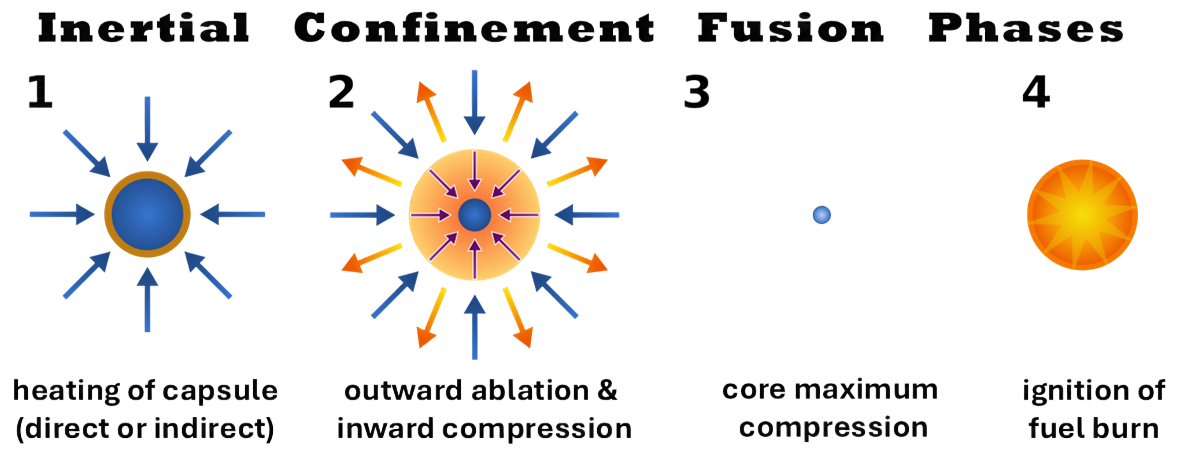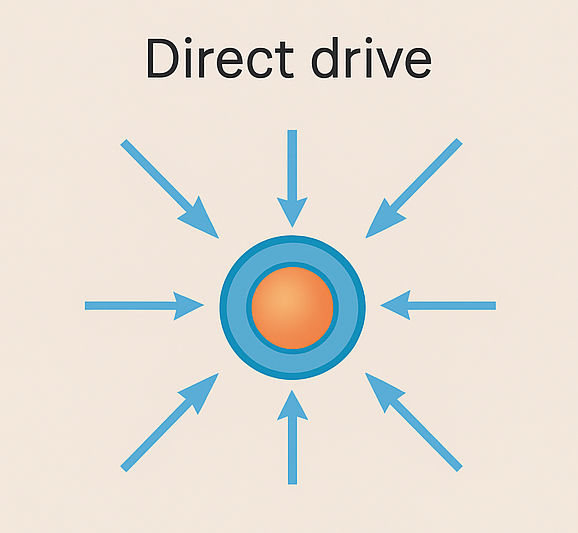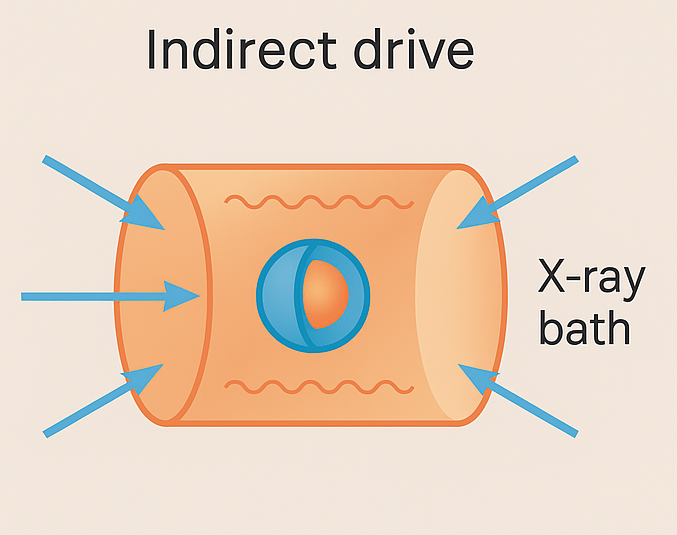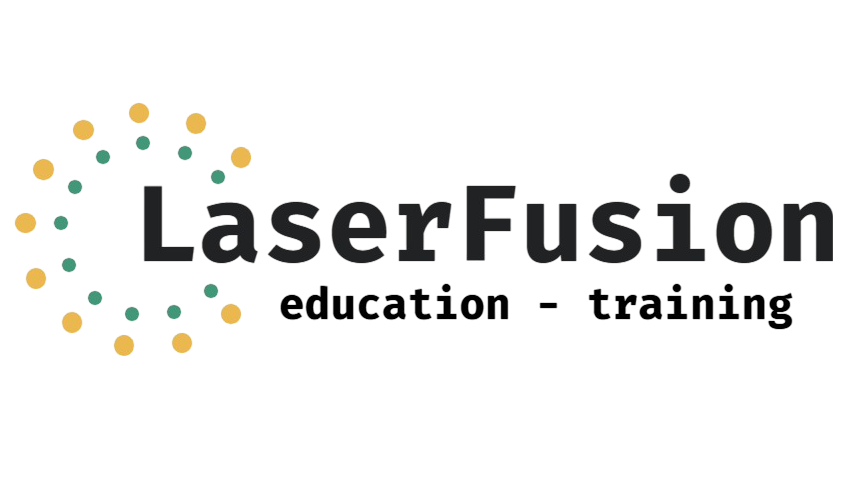Lead Institutions: CNR-INO ~ CELIA‑Université de Bordeaux.
Why it matters Understanding the underlying physics and developing robust diagnostics are fundamental to achieving reliable fusion yields.
Objectives & Activities
- A 10‑day IP at UBx, in Bordeux, France, indicative Jul 2025.
- A 5‑day bootcamp at CNR-INO, in Pisa, Italy, indicative November 2025.
- Educational material development
Physics of laser fusion
Fusion energy is a natural process for energy production in the stars, it is practically an inexhaustible source of energy which supports life on Earth. Fusion energy is a sustainable, environmentally clean power source using the isotopes of hydrogen as its principal fuel. The fusion process produces no greenhouse gasses or long-lived radioactive waste materials and ensures energy security for the long term.

Inertial Confinent Fusion (ICF) represents one of the candidate schemes for the demonstration of the controlled fusion process as well as a candidate for providing a final high repetition rate fusion reactor. Two principal schemes dominate current R&D:

Direct‑drive – multiple beams strike the capsule surface directly, ablating material outward and driving an inward rocket‑like implosion. Key challenges: laser imprint smoothing, cross‑beam energy transfer and shock timing.

Indirect‑drive – beams first heat the inner walls of a high‑Z hohlraum, converting optical energy to x‑rays that symmetrically bathe the capsule. This reduces imprint but introduces laser–plasma instabilities in the hohlraum and stringent symmetry tolerances.
Alternative ignition concepts, such as Shock Ignition (late‑time high‑intensity spike to launch a strong shock) and Fast Ignition (separate ultra‑intense beam generates relativistic electrons that spark a hot spot), are active European research themes.
Why diagnostics are important
In IFE, every shot is a costly, data‑limited experiment. Multi‑modal diagnostics provide the quantitative insight needed to validate simulations and guide design iterations. Some of the optical, particle and x‑ray diagnostics central to IFE shots are
- VISAR / SOP & shadowgraphy for shock timing
- X‑ray pinhole, streak and gated imagers
- Neutron time‑of‑flight (nTOF) & activation
- Gamma‑ray spectrometry for hot electron pre‑heat
- Thomson scattering for electron‑ion equilibration
Real‑world IFE diagnostics should also survive rep‑rate operation (≥ 1 Hz) and high debris/EMP environments driving R&D in optical relays, scintillators, stack detectors and AI‑assisted data reduction.
By providing fundamental physics, practical and experimental training in these areas, the WP2 of the project empowers learners to contribute directly to next-generation fusion experiments. It builds a solid foundation in both theory and lab practice—essential for careers in fusion research, high-energy-density physics, and related advanced technologies.
